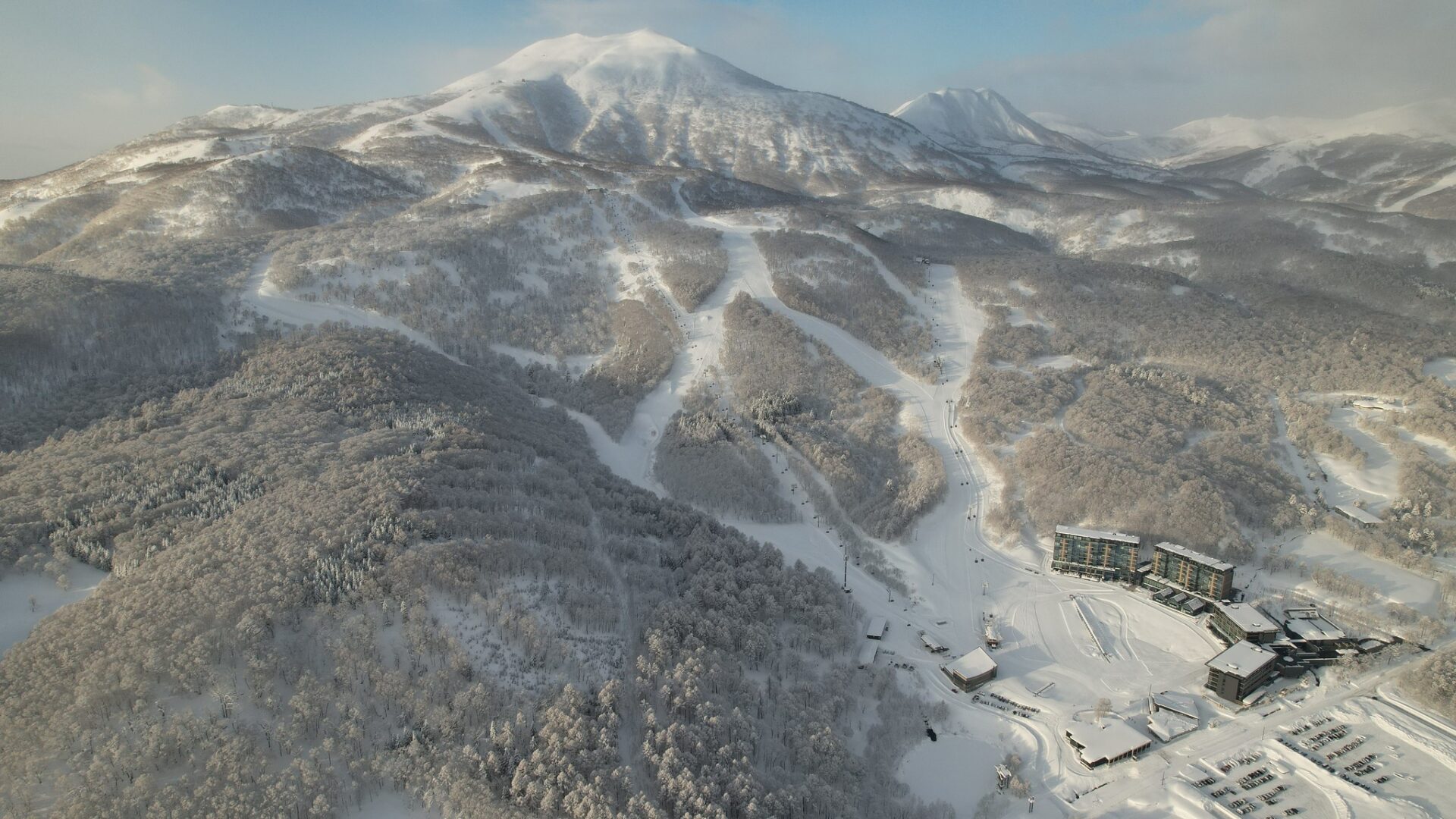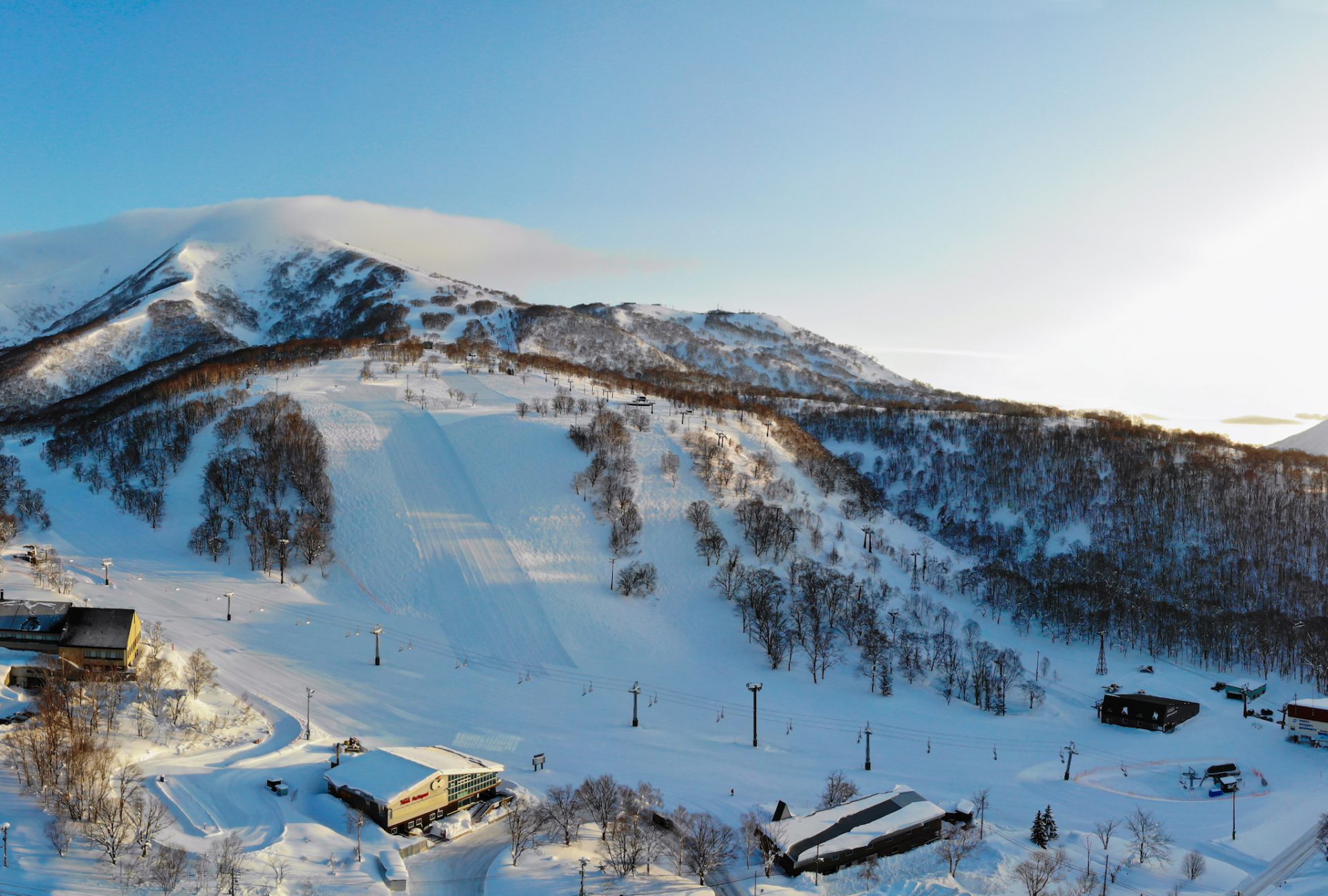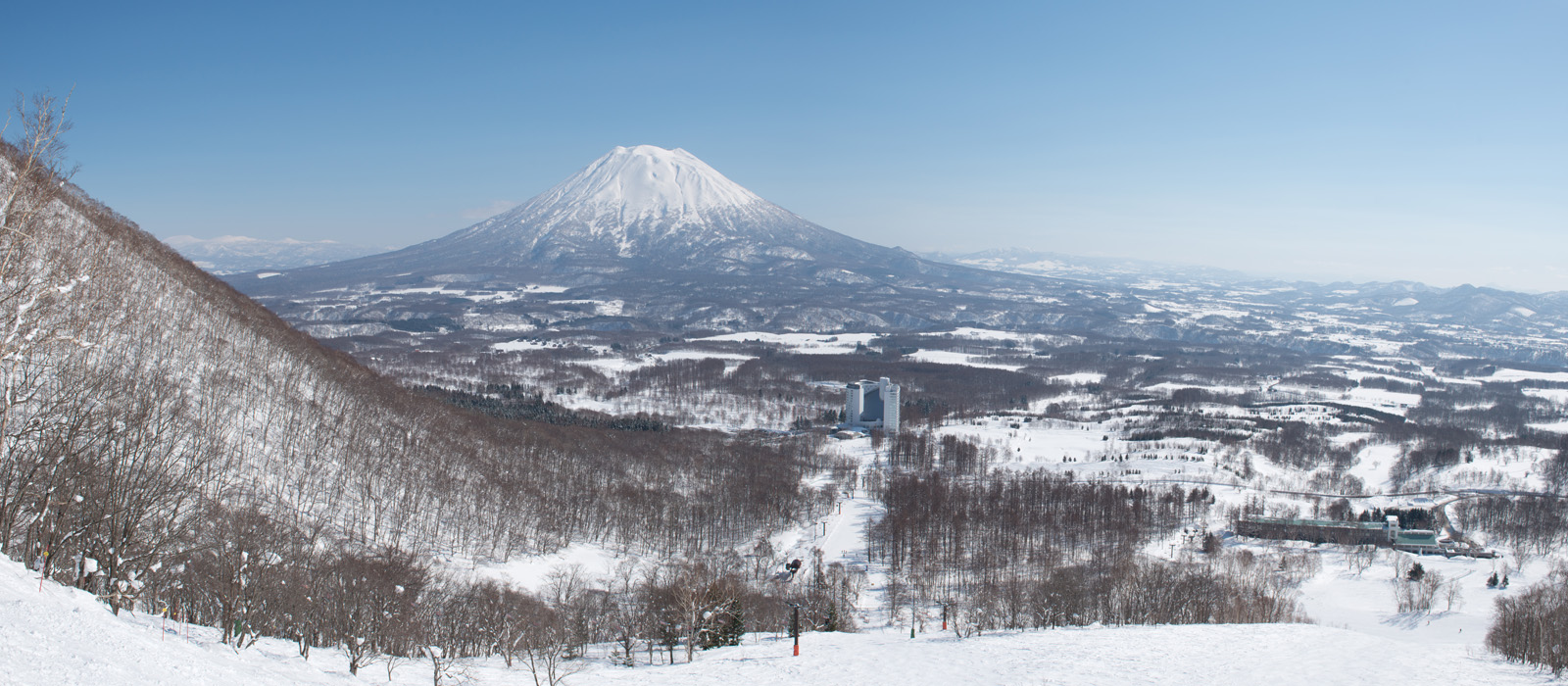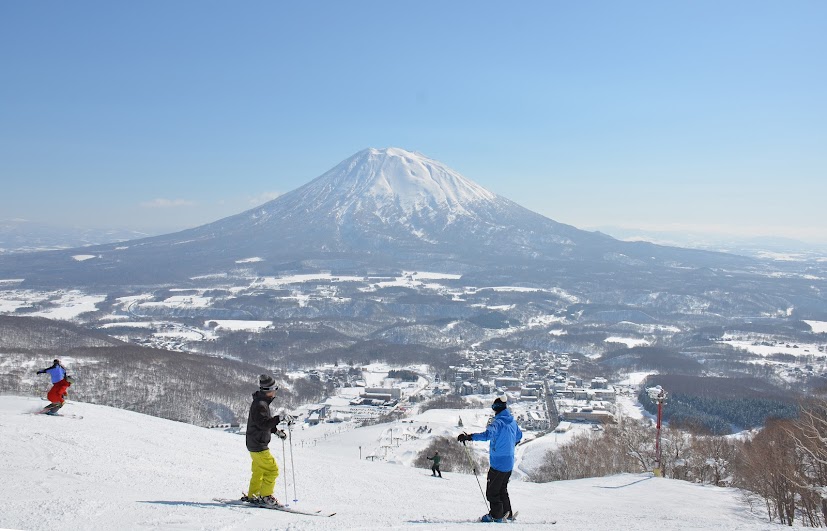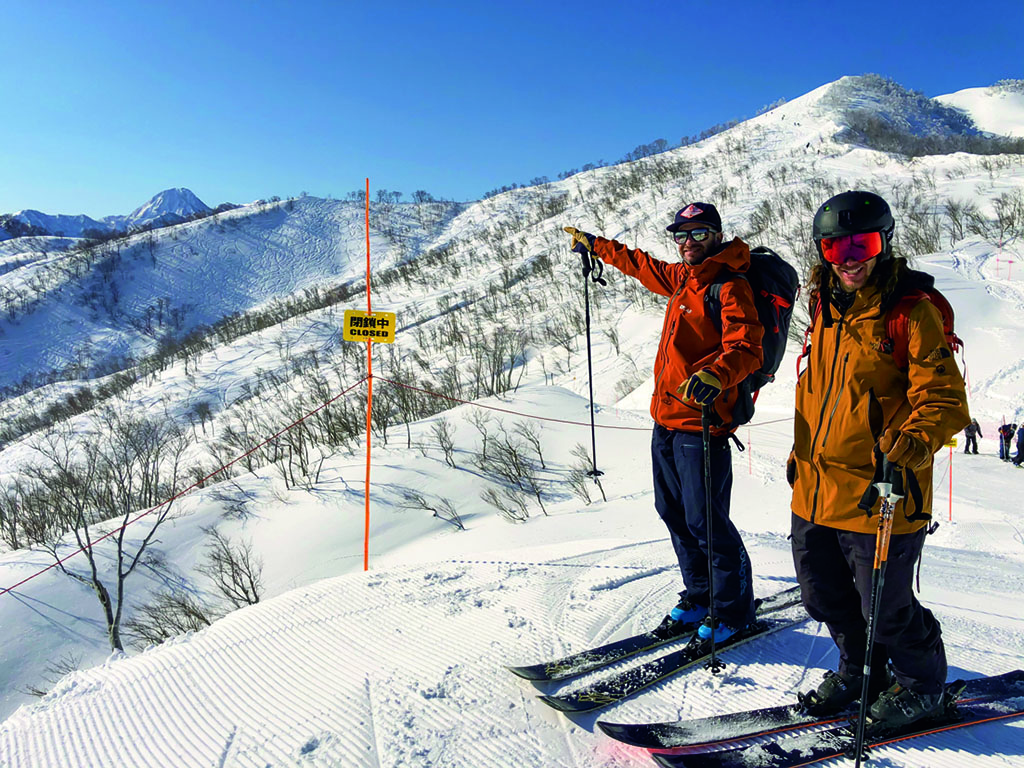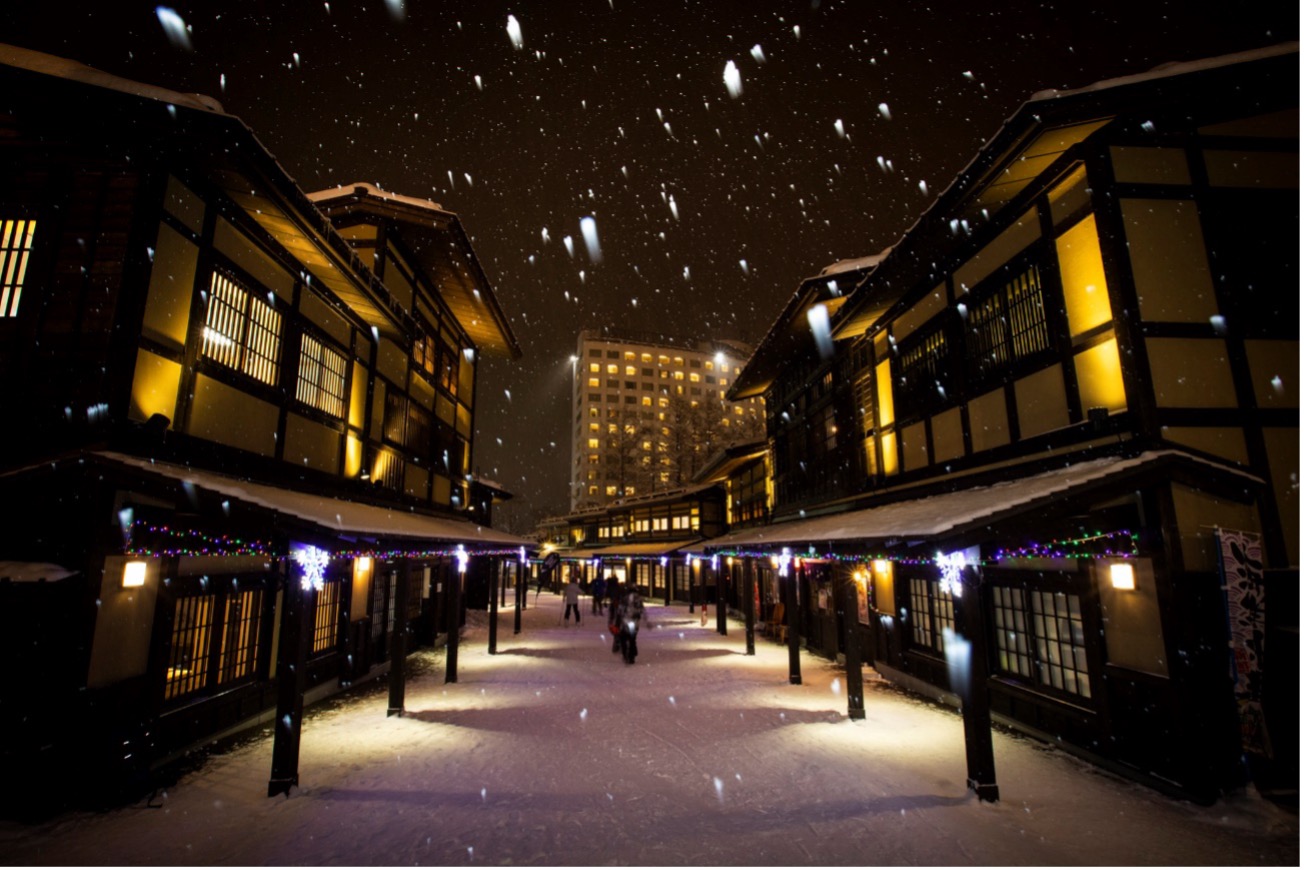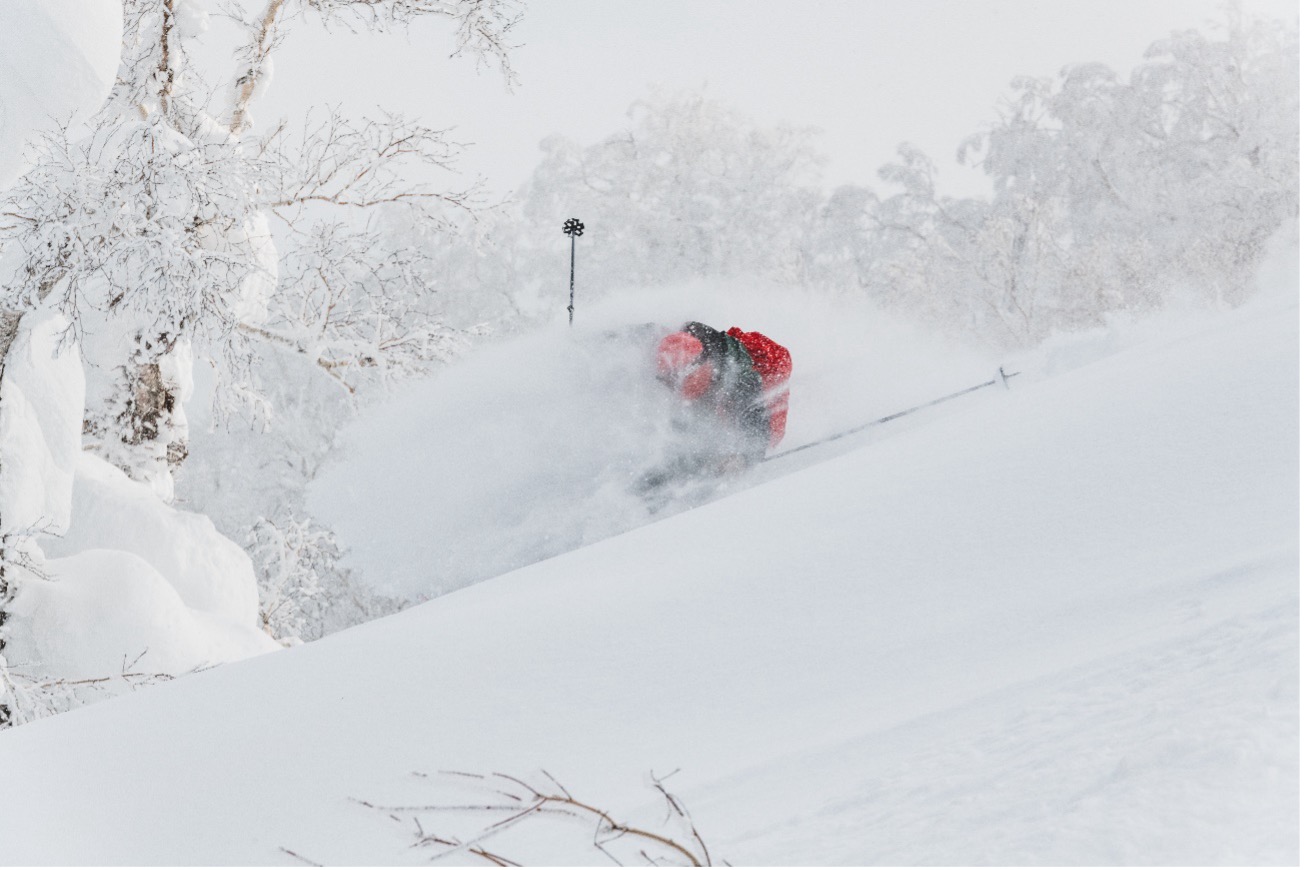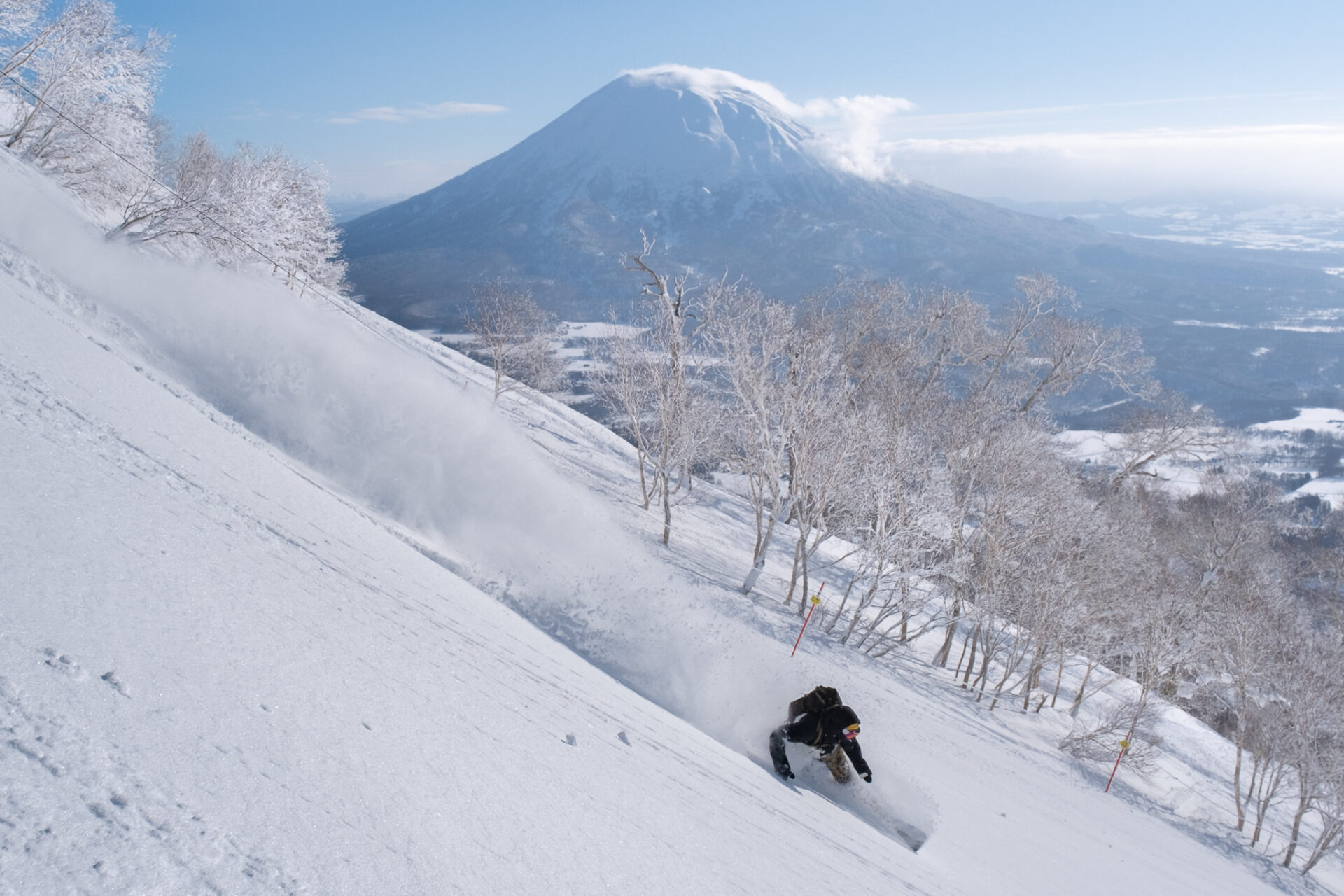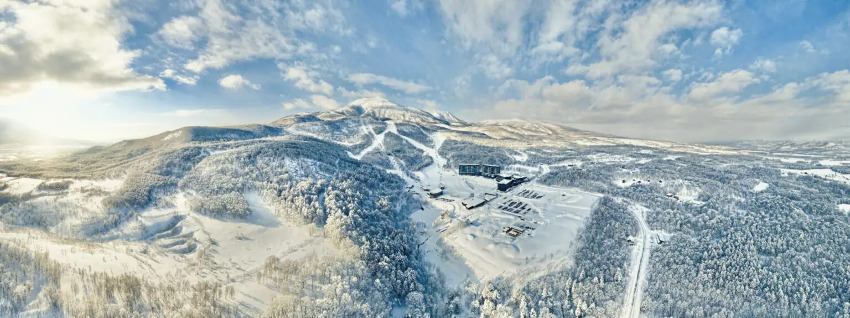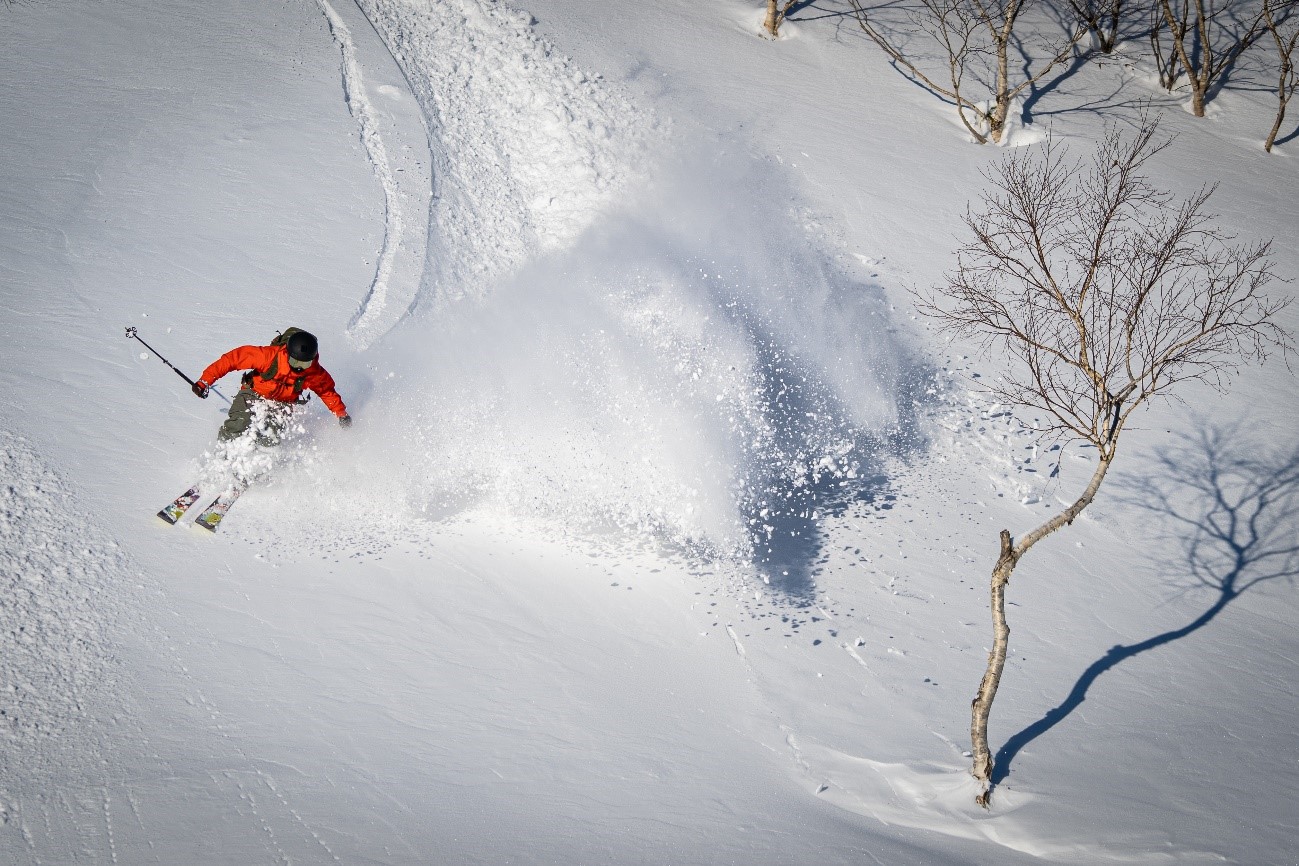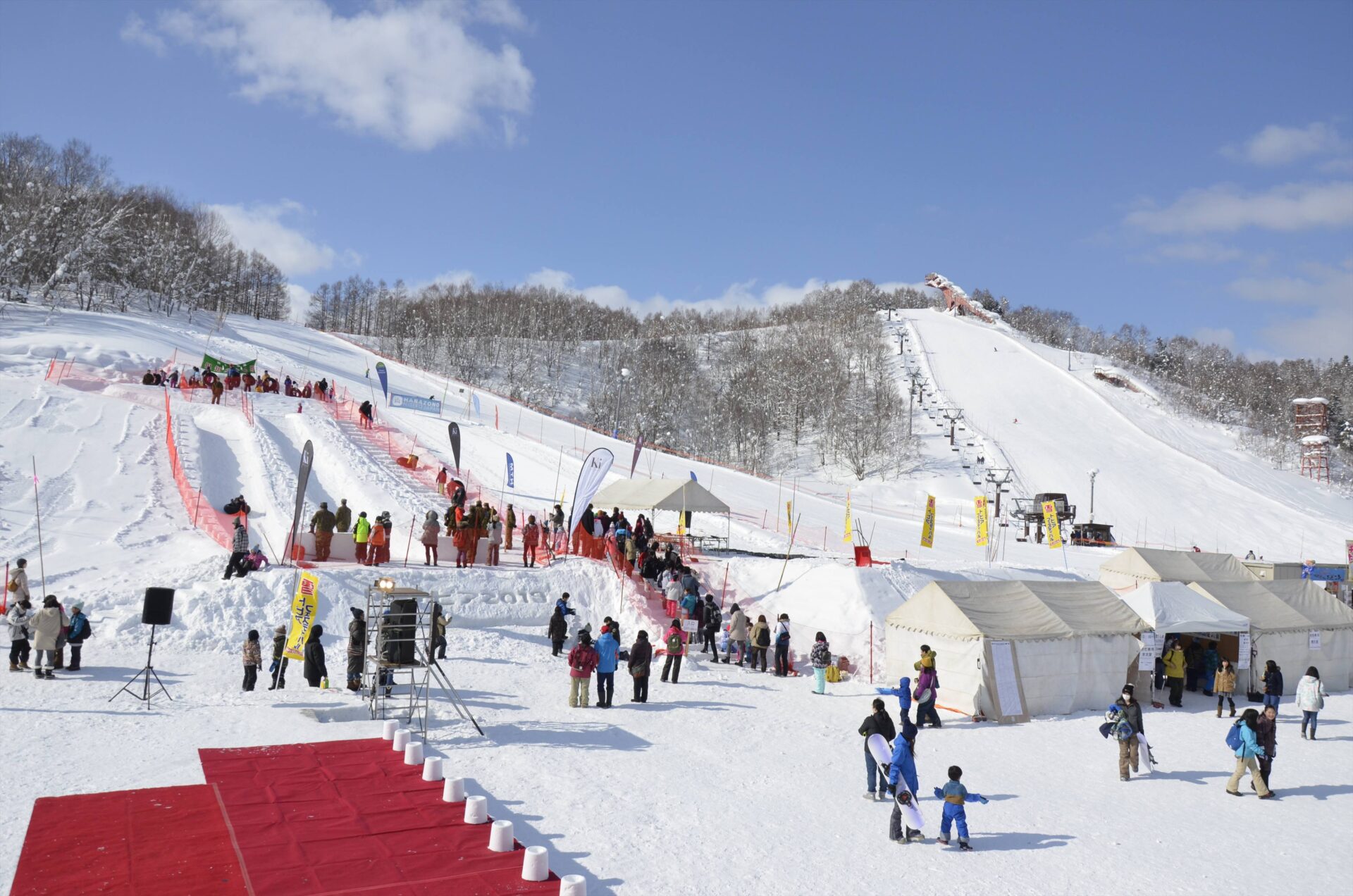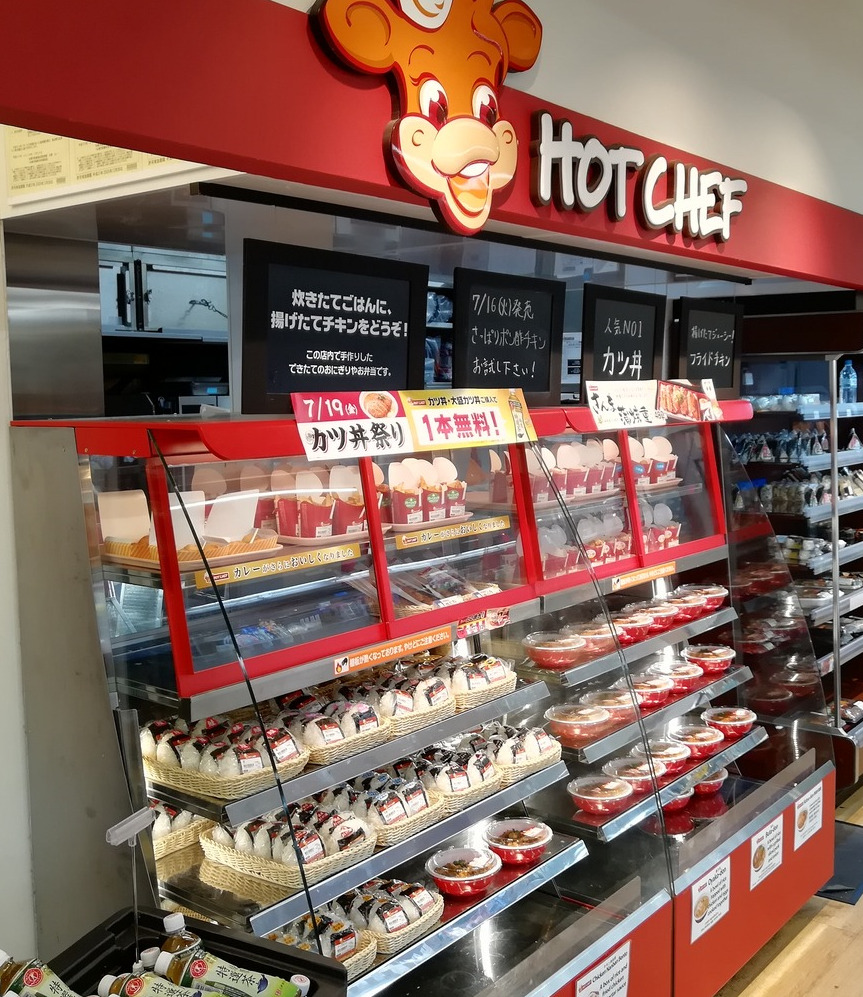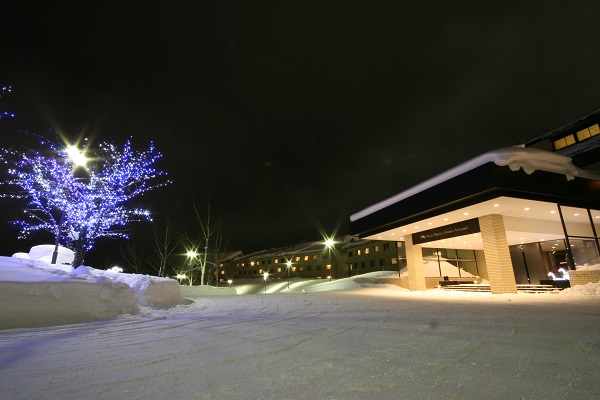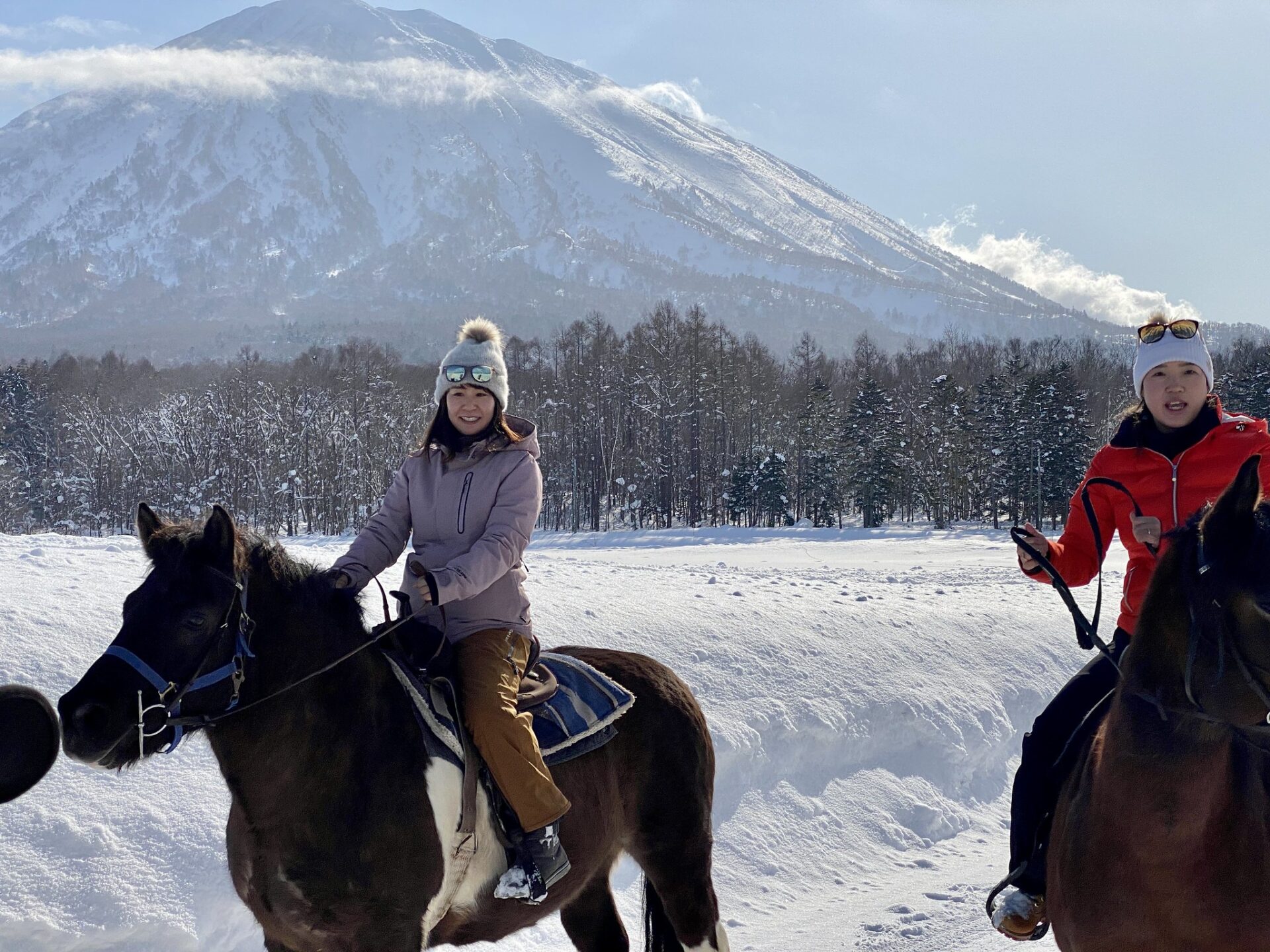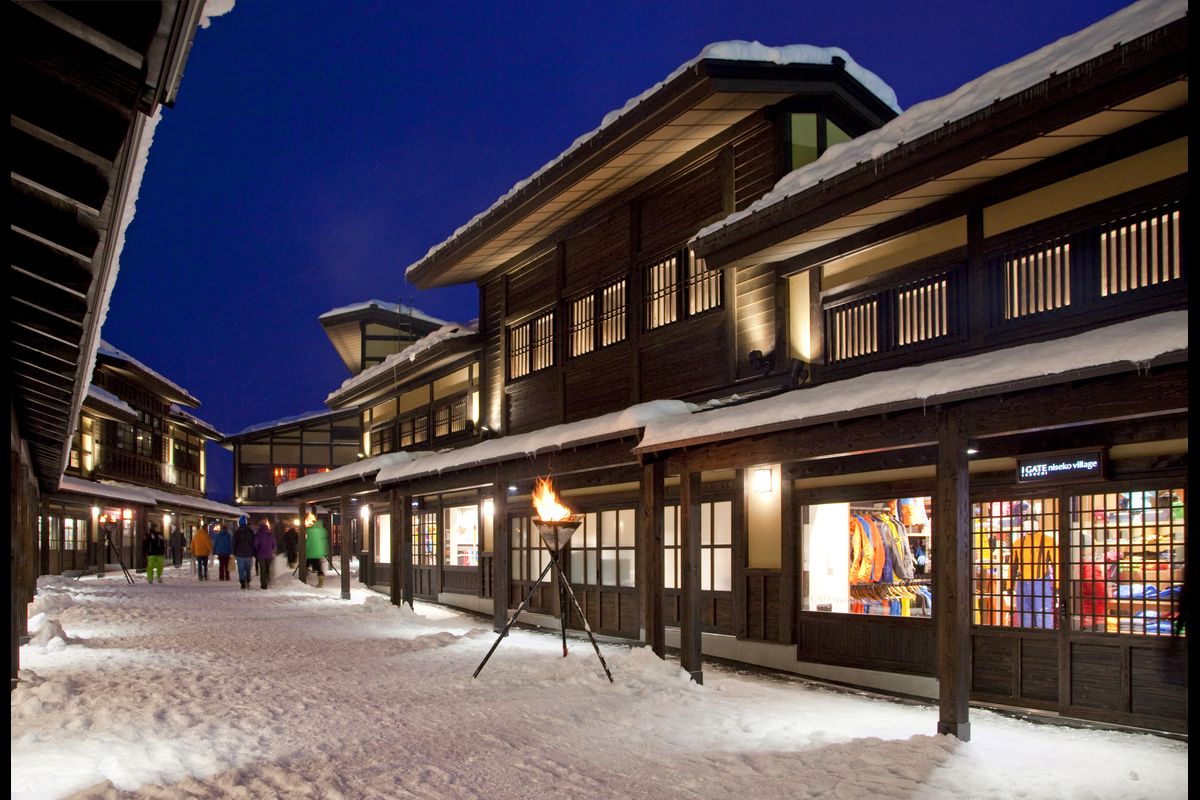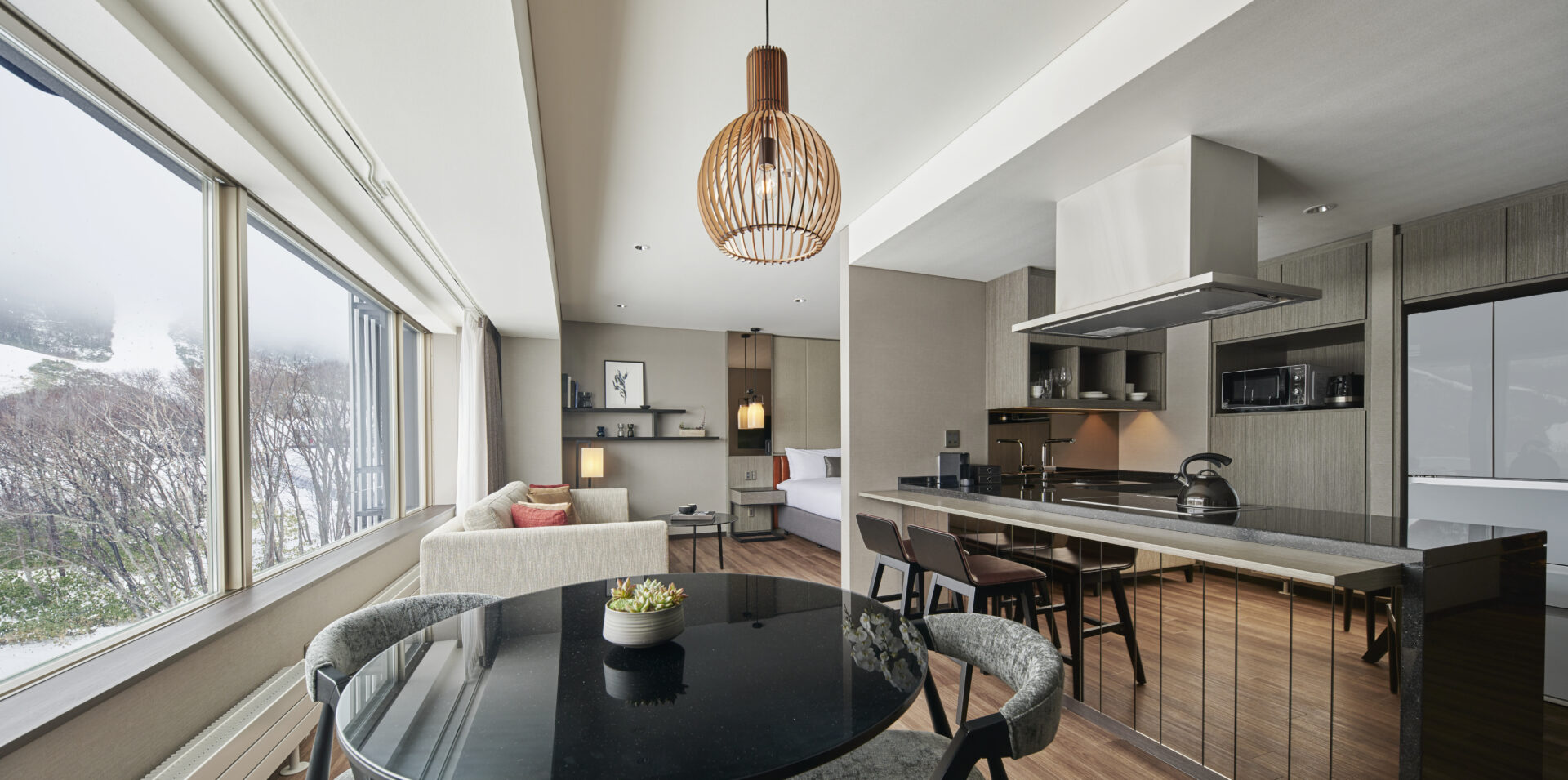Backcountry based in Niseko
- AREA Western Hokkaido
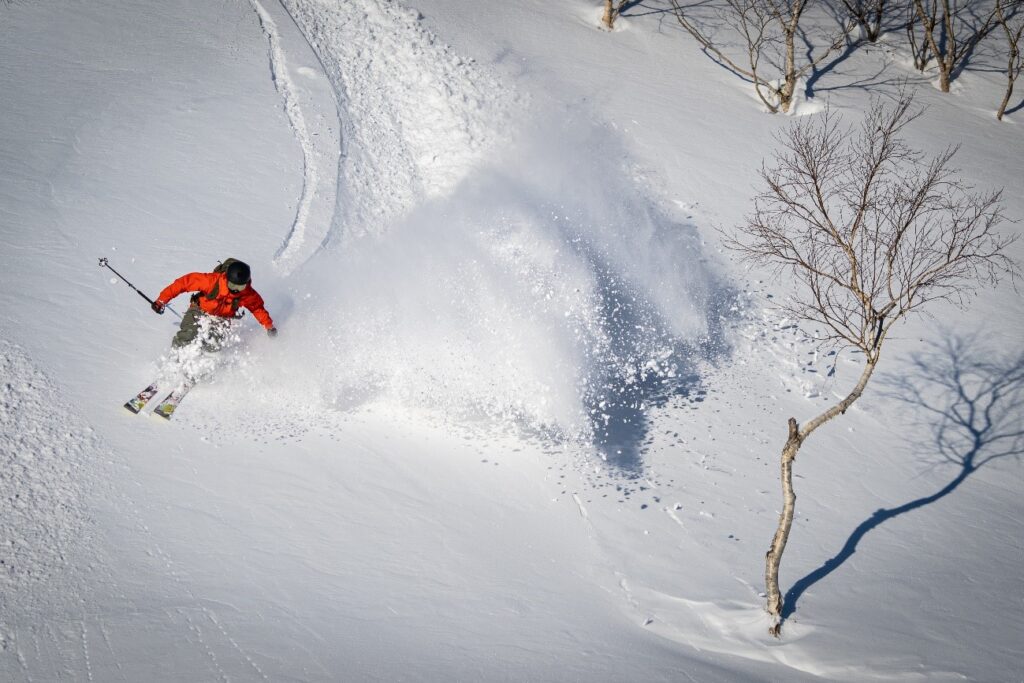
Thought of as the birthplace of JAPOW, Niseko has the most backcountry routes accessible from ski resorts out of the resorts of Japan. The area also has the most inbound skiers visiting to ride on these routes. The 4 resorts of NISEKO UNITED are located on the sides of Niseko Annupuri, and backcountry routes from these resorts, plus a fifth, Niseko Moiwa Ski Resort, are spread out along the peak. Here we would like to introduce an example of backcountry you can enjoy from Niseko.
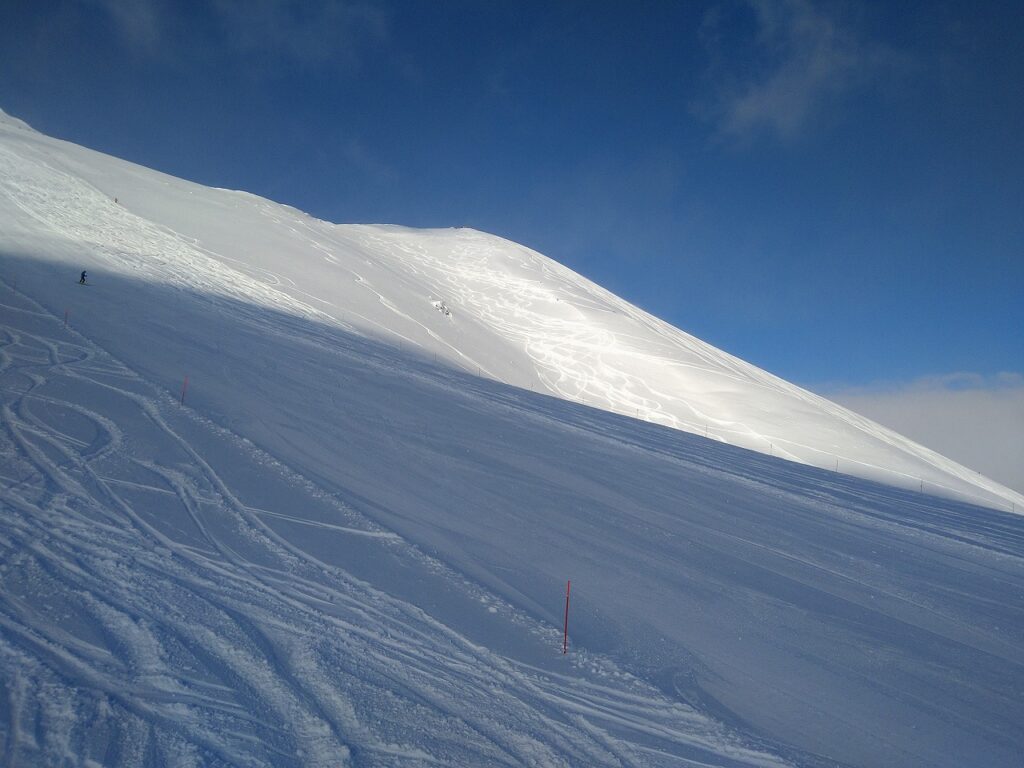
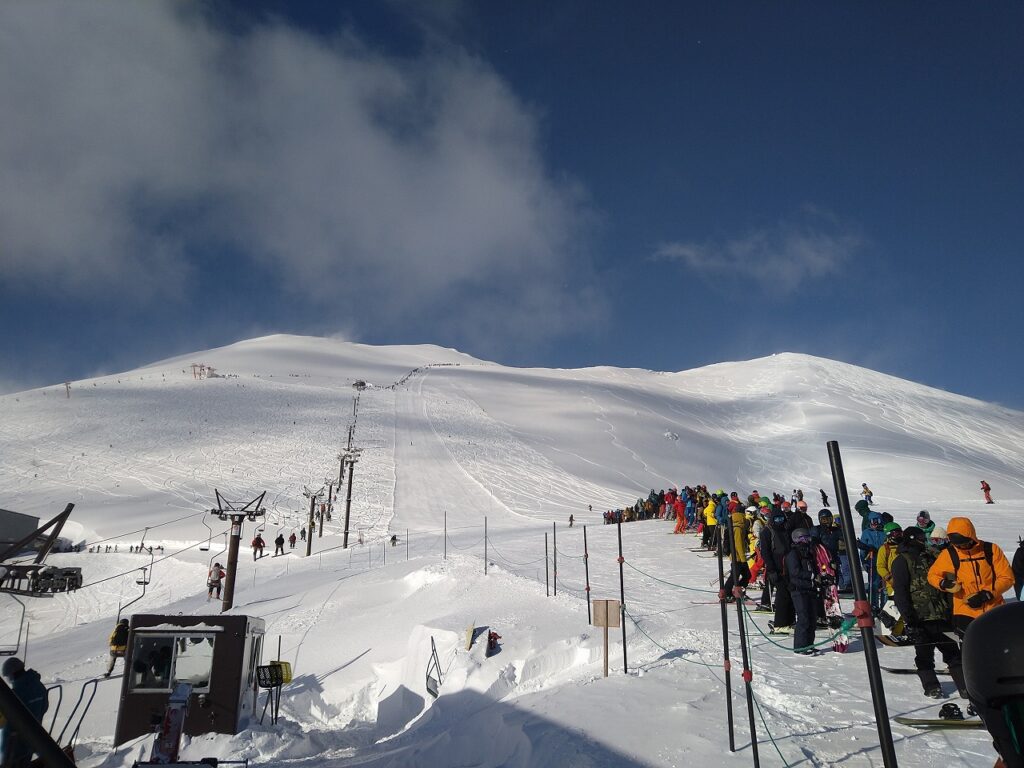
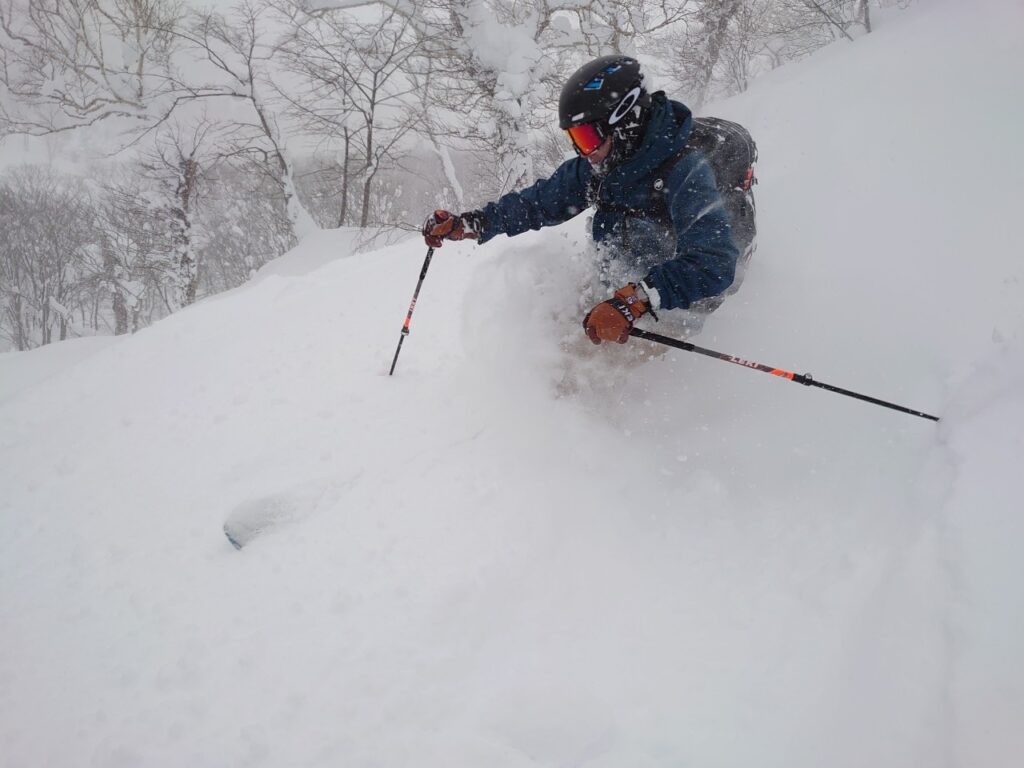
Backcountry riding in accordance with the Niseko Rules
Niseko’s main peak is Niseko Annupuri, with a summit elevation of 1306m. Its slopes are home to 5 ski resorts: Grand Hirafu, HANAZONO, Niseko Village, Annupuri, and Niseko Moiwa.
Each resort has a multitude of courses to offer, but the backcountry accessible from the resorts is also a large factor to Niseko’s worldwide fame.
Although there have been major avalanche-related accidents in the past, backcountry riding is not banned in Niseko. Instead, under the principle that backcountry riding should be done at one’s own risk with sufficient care, and upon careful consideration of safety, resorts set regulations and guidelines in order to prevent accidents. In addition, it is strongly recommended that guests enter the backcountry with tour guides.
Niseko has many active backcountry guides offering a variety of backcountry tours. Guides choose their course from a multitude of route options depending on the guests’ skill level, weather, and snow quality.
In addition, the “Niseko Rules” are implemented and strictly enforced for guests to enjoy backcountry safely.
■Niseko Rules
1:Always use gates when entering backcountry areas.
※Reposted from NISEKO UNITED
2:Do not duck boundary ropes.
3:Everyone skiing/snowboarding in backcountry areas should wear a helmet and carry an avalanche beacon.
4:Backcountry skiing/snowboarding is prohibited when gates are closed.
5:Never enter off-limits areas at any time (except for official rescue and research operations).
6:Elementary school children are not allowed in backcountry areas unless accompanied by an elder companion.
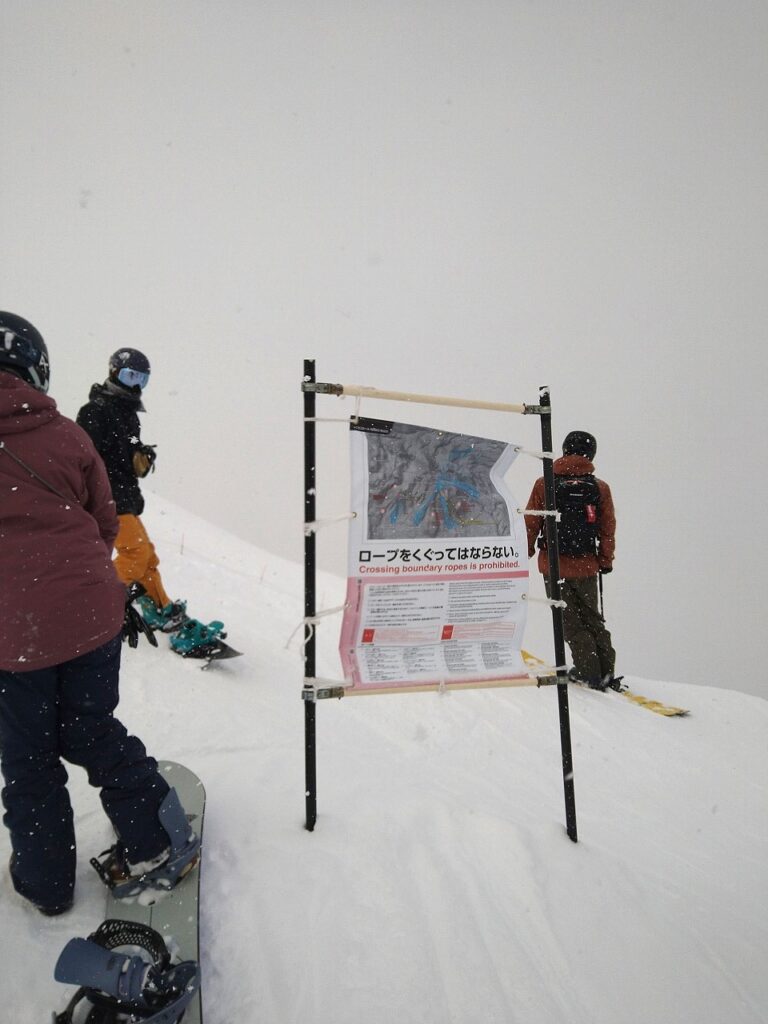
Ski resort patrols control the 11 gates to the backcountry on Niseko Annupuri every day.
The gates are opened at set times, and are sometimes closed depending on weather and snow conditions. The day’s latest updates on mountain conditions are posted at the gates, and patrols remind each guest entering the backcountry to take safety precautions. This is because more often than not, guests without knowledge of the mountains or equipment such as avalanche beacons would join the line of riders going into the backcountry by mistake.
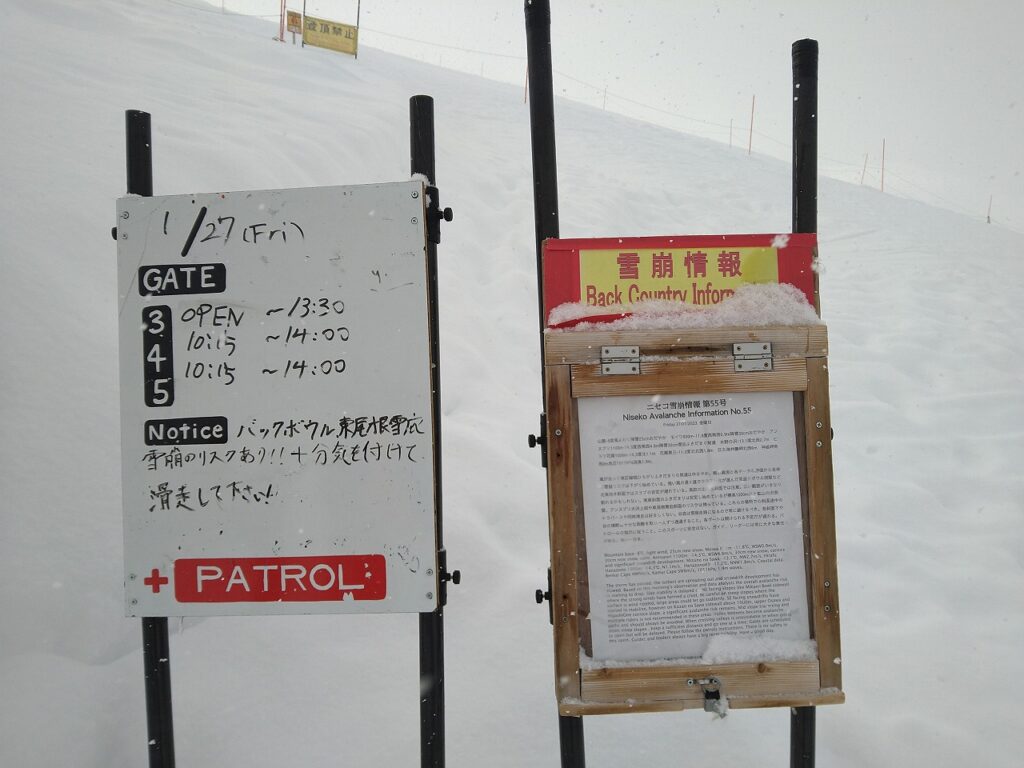
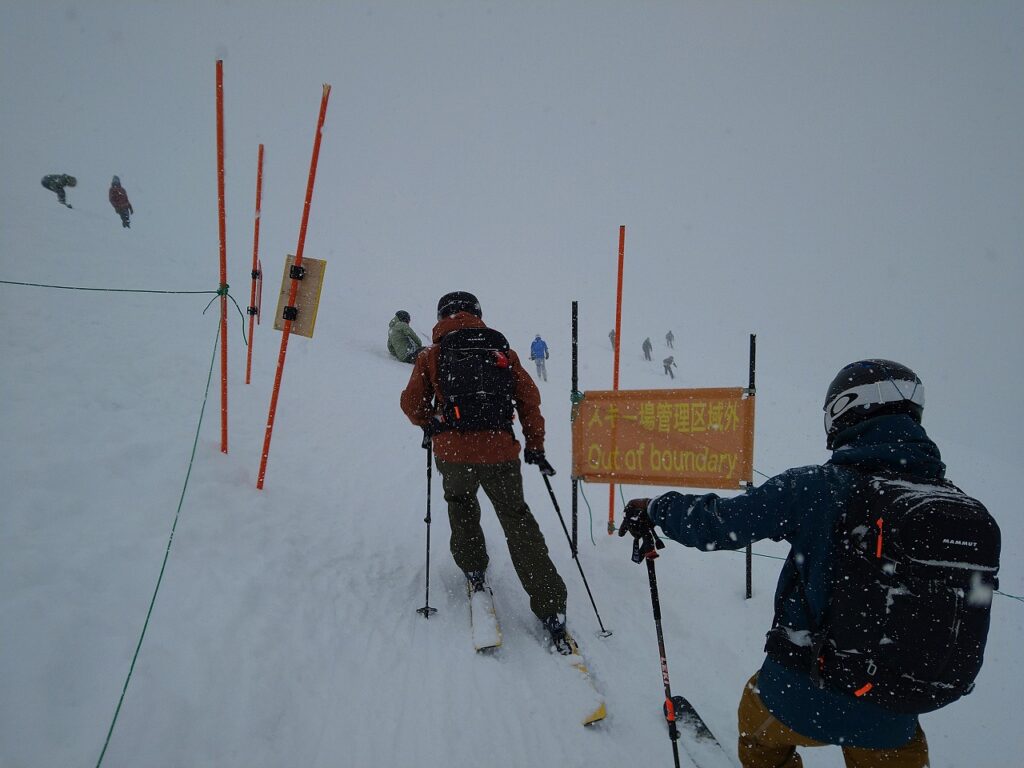
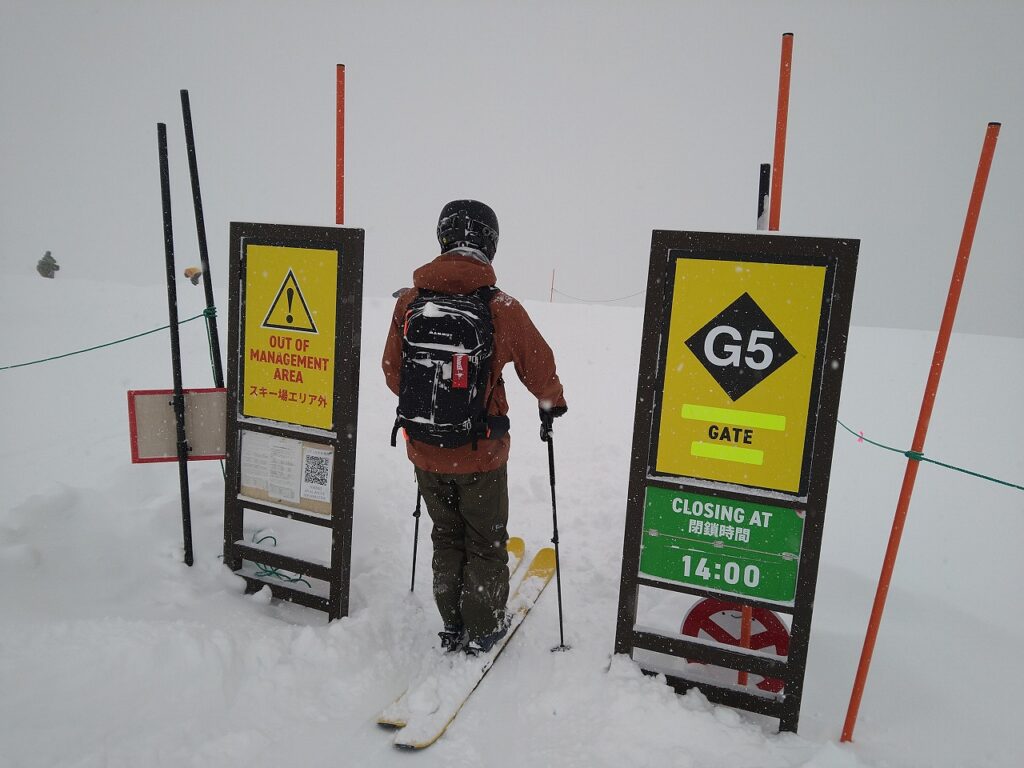
Niseko’s ski resorts have 11 gates into the backcountry, and as stated in the Niseko rules guests must always use gates when entering backcountry areas (including out of resort management areas). Many of the backcountry zones are named, like Fuliwara no sawa, Higashi-one (East Ridge), Kita Shamen (North Face), O-sawa, Nishi-one (West Ridge), Naka-one (Center Ridge), Mikaeri Bowl, Moiwa Bowl, Mizuno no sawa (Limited access controlled area), and Strawberry Fields.
The most popular routes are those from the summit of Niseko Annupuri, accessible via a 20-to-50-minute hike in boots from the gates G2 or G3. Since the resorts often groom the snow to make hard packed trails from the gates to the summit, the hike is relatively easy and does not require climbing equipment. At the summit there is a shelter made of concrete where many people wait out sudden foul weather.
From the summit there are a variety of routes, such as Fuliwara no sawa and Higashi-one, and under good conditions you will be greeted by great conditions with deep fresh snow on large slopes above the timberline.
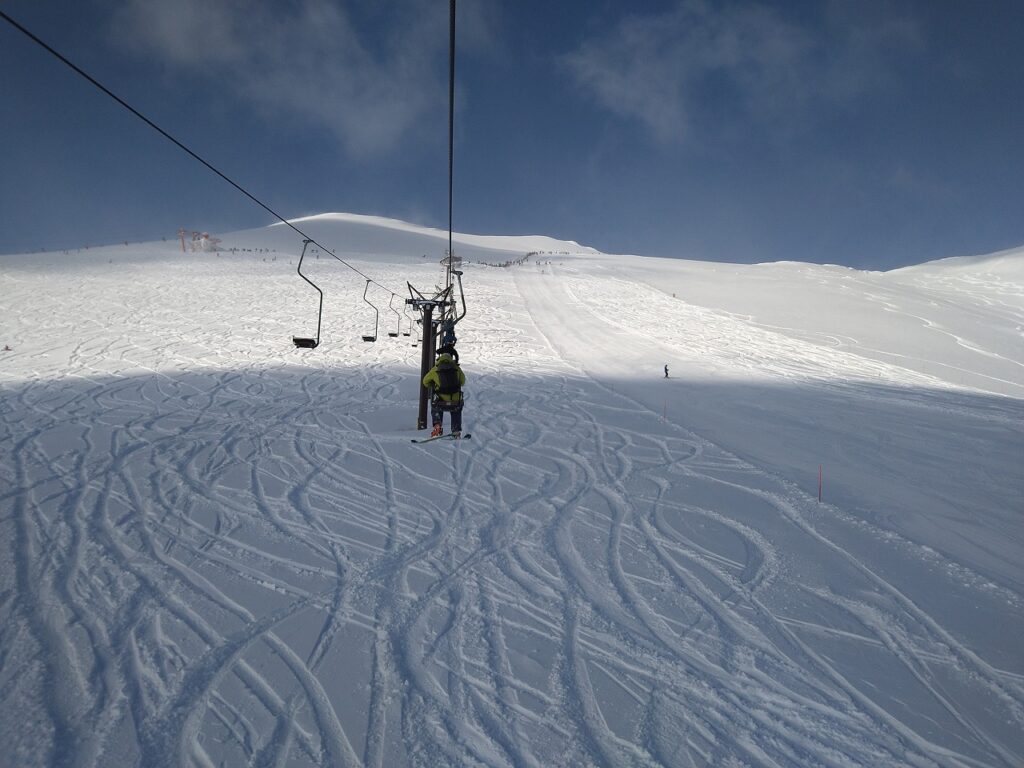
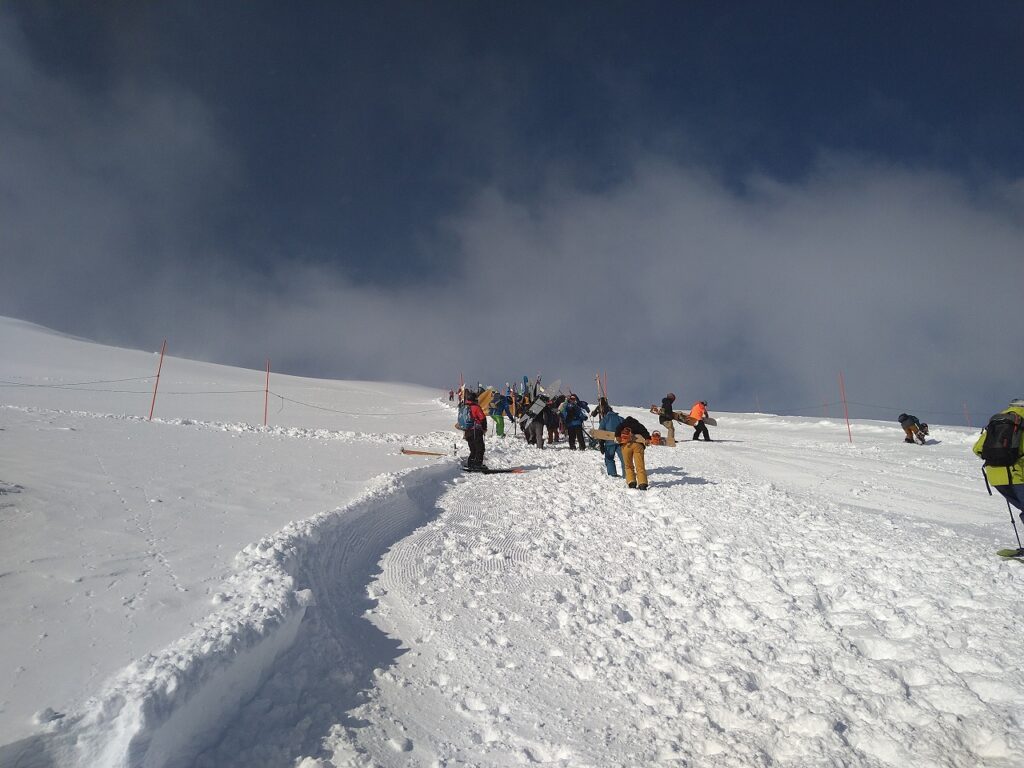
Riding guides from each od Niseko’s gates
Below is a guide to the routes from each gate shown on the Niseko rules poster. Of course, riding alone solely based on this information is very dangerous. We strongly recommend that guests from overseas enter the backcountry with local guides.
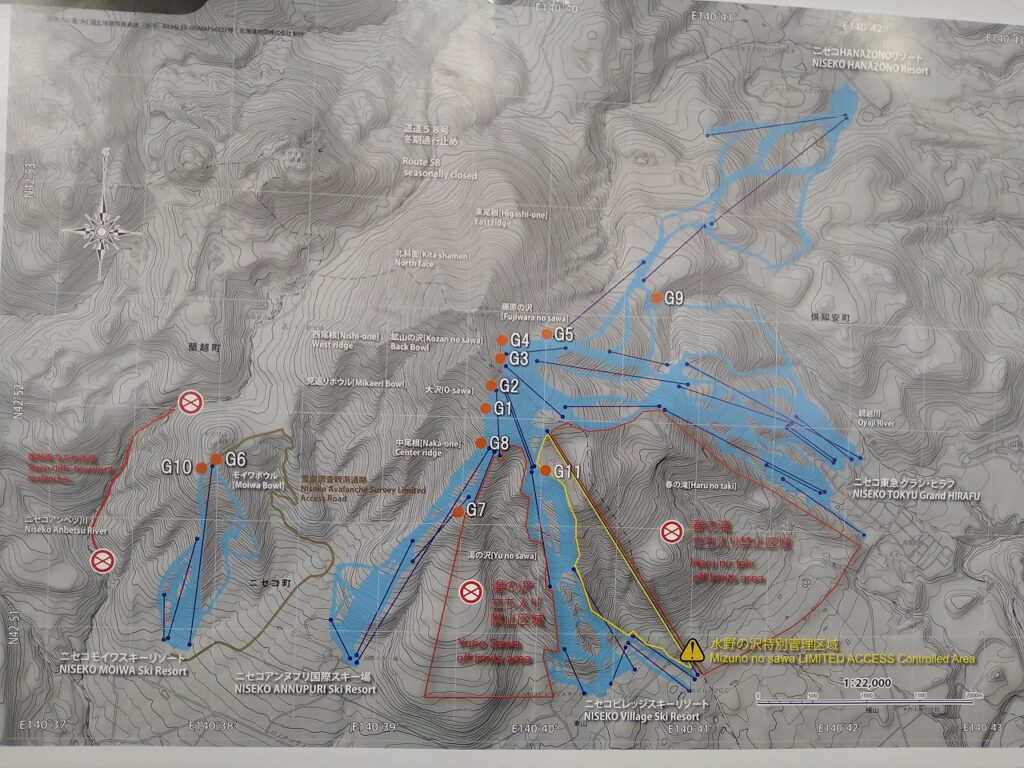
G1 L-ji gate. Alt. 1050m.
※Reposted from NISEKO UNITED
Ride down the foreground trees west of Annupuri resort. Stay away from the valley bottom and the slopes on the opposite side of the valley.
G2 Annupuri peak gate. Alt.1170m.
Stay away from the valley bottom and cornice slopes. Keep above 1150m level when traversing across to the Backbowl.
G3 Hirafu peak gate. Alt.1180m.
Be fully conscious of the hazards involved in riding the Higashi-One (East-ridge), the North Face or the Backbowl.
G4 Fujiwara gate. Alt.1180m.
Opens 60 min after G3. Extreme caution required when traversing across Higashi-One. Do not enter Fujiwara-no-sawa when the gate is closed.
G5 Hanazono gate. Alt. 1050m.
Extremely unstable cornices are developing above when G3 & G4 are closed, and traversing to Higashi-One during that time is especially discouraged.
G6 Moiwa peak gate. Alt.800m.
Access gate to Mikaeri-no-sawa, Annupuri west-face, and Goshiki onsen area. The Niseko Town Forestry Access Road located within the boundaries of the Hokkaido Designated Forestry Area is managed by the Niseko Avalanche Research Bureau.
G7 Ee-sawa gate. Alt. 790m.
Do not cross ropes to enter Ee-sawa. Riding down to Yu no sawa off-limits area is strictly prohibited.
G8 Hachi-ban gate. Alt.950m.
Access gate to the lower O-sawa area. Ride the foreground trees and do not traverse across to the opposite cornice slopes. Site of the first fatal avalanche accident involving a snowboarder in Japan.
G9 Waterfall gate. Alt.730m.
Strongly recommended to quickly return towards the course before the gully gets too narrow to cross. Danger, waterfall ahead. The gate won’t open until the waterfall is buried.
G10 Anbetsu gate. Alt.760m
When it gets down too much, it is difficult to return to a course. The Snow here is DEEP, there is a cliff adjoining at bottom of the valley.
G11 Niseko Village gate. Alt.930m
Controlled Avalanches are conducted in the “Mizuno-no-sawa Limited Access Controlled Area” as a safety precaution. On days when the avalanche risk in this area is low, under the supervision of Patrol staff the gate into this area will open.
Backcountry with no hike needed
One of the major factors that contribute to the popularity of Niseko backcountry is the many routes that do not require hiking. From the Grand HIRAFU and HANAZONO area you can access Fuliwara no sawa and Higashi-one via the King Lift #4 and Hanazono Hooded Quad Lift #3 and Strawberry Fields via Hanazono Quad Lift #2. The Niseko Gondola in Village will take you to Mizuno no sawa, Annupuri’s Annupuri Gondola to O-sawa and Naka-one: all of these routes will get you on slopes out of resort managed areas with very little hiking.
Backcountry riding often entails long hikes and enjoying the wild outdoors only after that, but with Niseko you can ride on huge slopes above the timberline and go on tree runs with chairlifts. Because of this, the backcountry beyond the ropes is often bustling with as many riders as the resort slopes on sunny days.
Making it possible for guests to go on many backcountry runs using the chairlifts sets Niseko apart from other areas, but backcountry is still outside of patrol routes and therefore has the associated risks. Be sure to follow the rules and be conscious of your safety, such as by joining guided tours, when enjoying the backcountry.
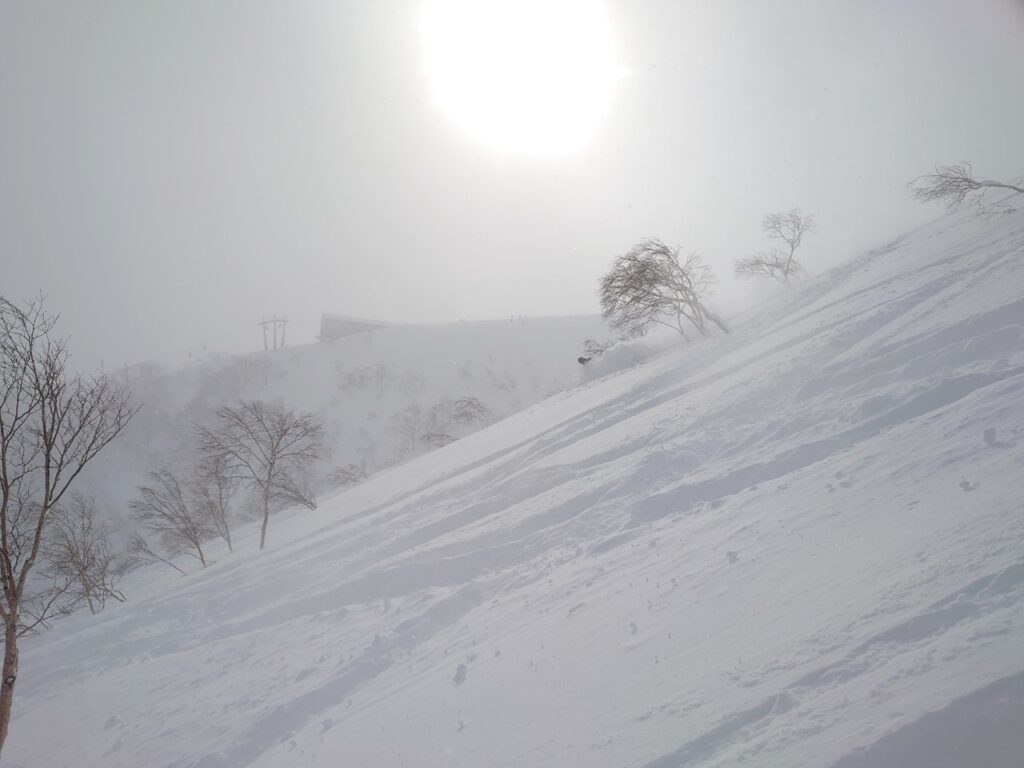
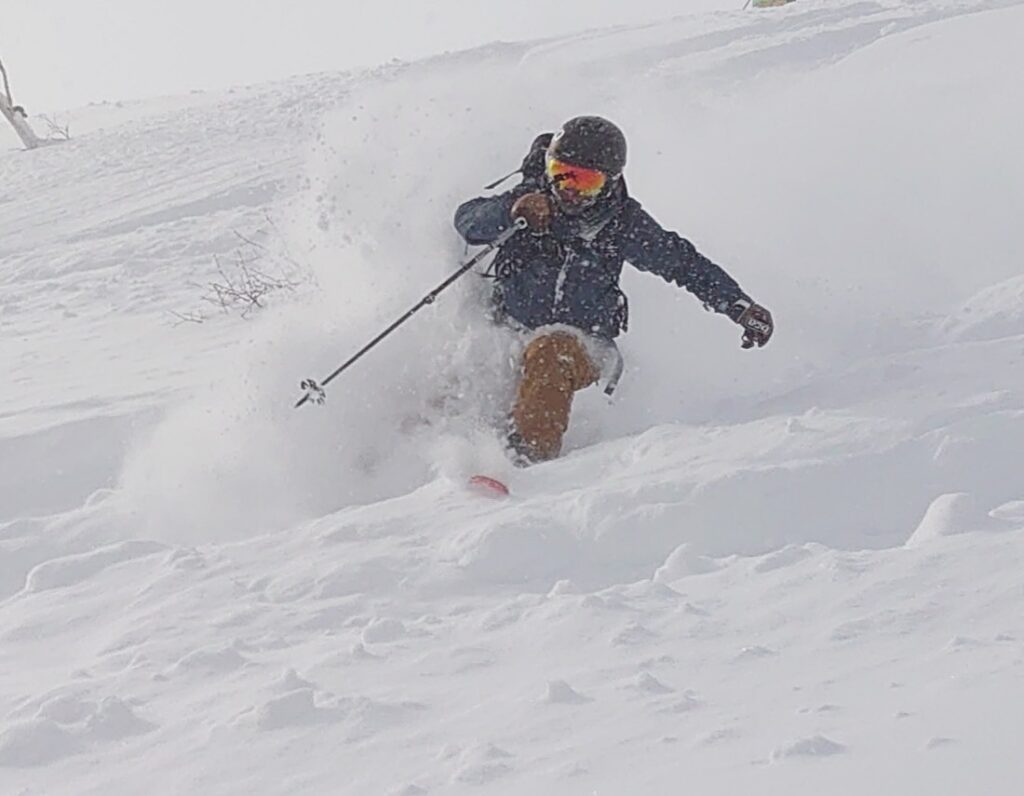
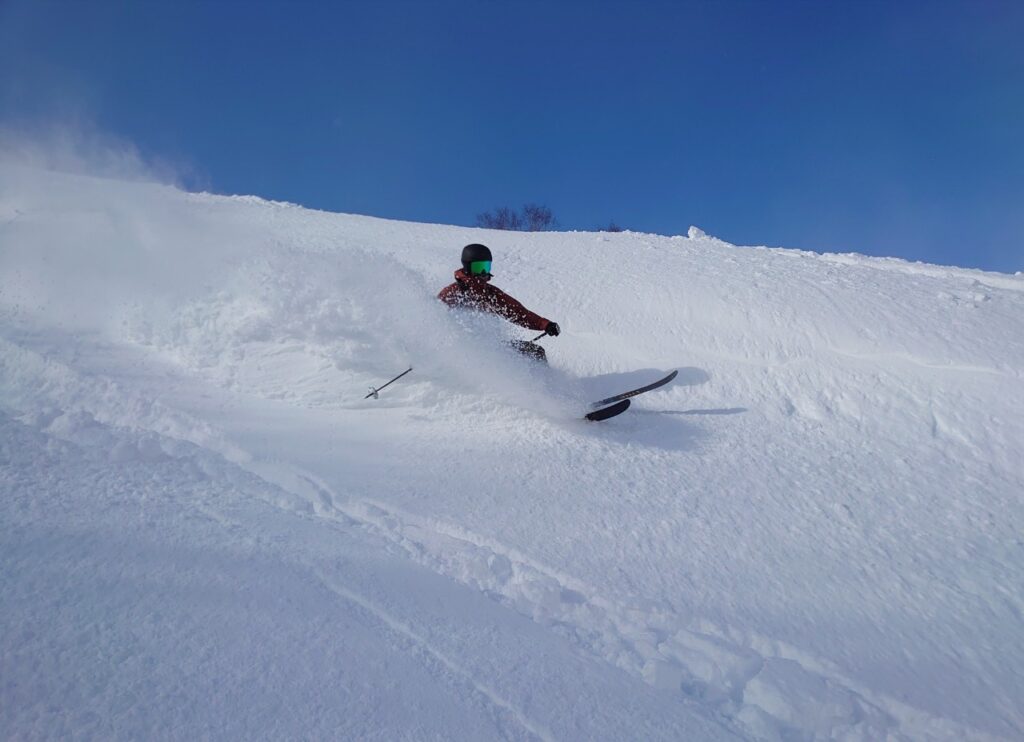
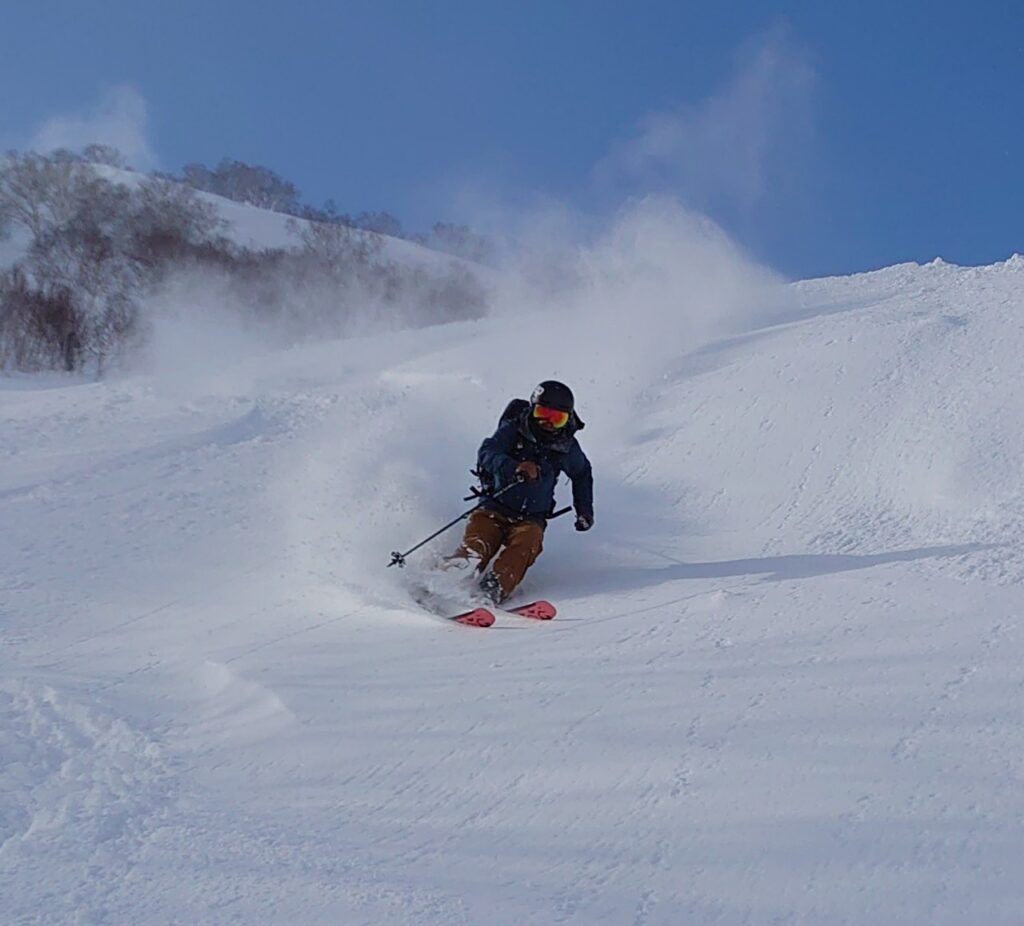
Reference URL:https://www.town.niseko.lg.jp/information/3555/
A day in Higashi-one backcountry
Report by Rio
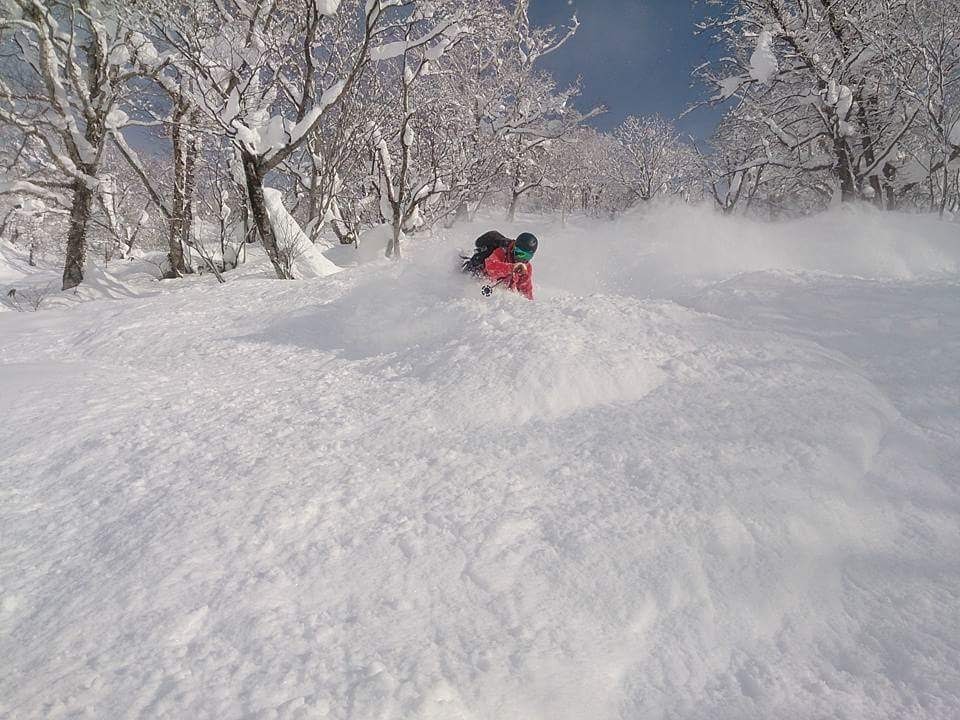
In late January, the peaks of Niseko were covered in the abundant light snow as they were in previous years. By the time the chairlifts start moving at 8:30, there is a long line at the Grand HIRAFU chairlifts at the base. We go up the mountain on two quad lifts. The King Lift #4 going up to the summit already has a line of guests waiting for it to start moving. On a day with clear blue skies like today, many people go through the G3 gate to reach the summit.
We are after the fresh powder. We follow our guide through the G5 gate, which is already open, into the sparsely wooded inclines by the quad lift. Every turn kicks up a spray enough to obscure our vision. At this hour, the deep, airy Niseko snow has no tracks. We ride this slope 3 times with the lifts before joining the long line for King Lift #4. The riders who had hiked up from G3 are making tracks by the summit.
Getting off King Lift #4 we line up by gate G4, which opens an hour after G3. Although not from the summit, this gate takes us to Fuliwara no sawa and Higashi-one. When the patrols open the gates skiers and snowboarders race onto the pristine slope. The open berm above the timberline with a 30-degree incline is exhilarating to ride on, and the higher altitude makes the snow even finer.
We ride about 2km of airy ungroomed snow, soaking in the great outdoors of Niseko. We enjoy 2 backcountry runs from G4, and make our way up to the summit of Niseko Annupuri via G3. Our predecessors had packed the snow with their boots, allowing for an easy hike. We arrive at the summit with the shelter. We go down into an area called Higashi-one to be greeted by a view that is absolutely stunning, even with the tracks. There are still lines with no tracks yet, and we drop into the enormous slope above the tree line. The snow we kick up flurries around us.
We take the 3km from the timberline to the woods in one go. Our guide takes us to our final run down an even steeper incline. From here we take a traverse line through woods on skis to the base of the resort. We got in 6 powder runs, including long ones, with no hiking. We enjoyed January Niseko to the fullest.
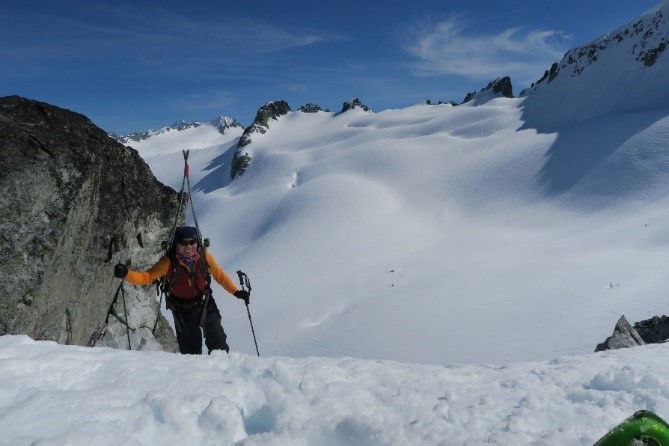
Afterword
Although backcountry has many appeals, it also has its risks. Riding in backcountry requires careful preparation, including proper equipment, knowledge of rules and risks in the mountains, rescue methods and insurance in case of accidents, and taking care of your overall health.
Especially if you’re an inbound guest from abroad heading out into the backcountry, be sure to go with a local guide that knows the area well. Hokkaido has multiple backcountry guides and guide clubs that offer tours in English, and other languages depending on the guide service. We strongly recommend using one of these services. In addition, bad weather increases the likelihood of avalanches. Please be sure to decide whether or not to enter the backcountry after obtaining the day’s weather and conditions from resort staff.
